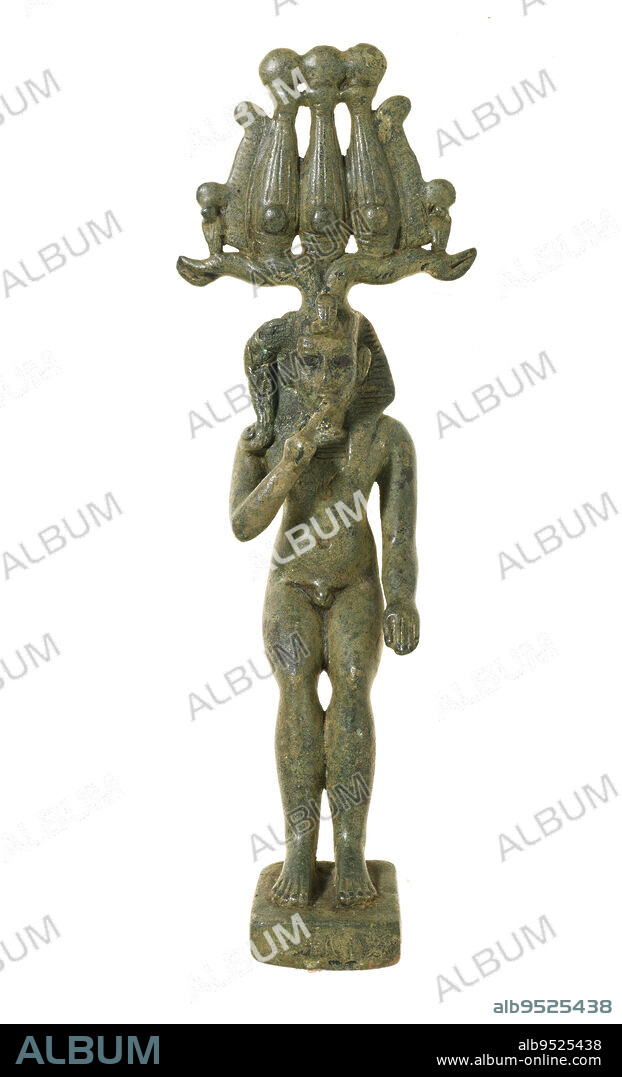alb9525438
God Horus (Harpocrates), 644-30 BCE, 6 1/4 x 2 9/16 in. (15.88 x 6.51 cm), Bronze with green patina, Egypt, 7th-1st century BCE, When the Greeks established dominion over ancient Egypt in 332 BCE, they adopted many of the Egyptian godsand renamed them. Their new name for the god Horus-the-Child was Harpocrates, and this depiction of him dates from that era of Greek rule, called the Hellenistic period. It shows typical markers of childhood, including the gods nudity, the side braid, and a finger in his mouth. As a matter of fact, the position of the hand to the lower lip or chin was the physical representation of the hieroglyph for 'child.'.

|
Add to another lightbox |
|
Add to another lightbox |



Caption:
God Horus (Harpocrates), 644-30 BCE, 6 1/4 x 2 9/16 in. (15.88 x 6.51 cm), Bronze with green patina, Egypt, 7th-1st century BCE, When the Greeks established dominion over ancient Egypt in 332 BCE, they adopted many of the Egyptian godsand renamed them. Their new name for the god Horus-the-Child was Harpocrates, and this depiction of him dates from that era of Greek rule, called the Hellenistic period. It shows typical markers of childhood, including the gods nudity, the side braid, and a finger in his mouth. As a matter of fact, the position of the hand to the lower lip or chin was the physical representation of the hieroglyph for 'child.'
Credit:
Album / quintlox
Releases:
Model: No - Property: No
Rights questions?
Rights questions?
Image size:
3157 x 5198 px | 46.9 MB
Print size:
26.7 x 44.0 cm | 10.5 x 17.3 in (300 dpi)
Keywords:
332 BCE • 644-30 BCE • 7TH-1ST CENTURY BCE • ADOPTED • ANCIENT EGYPT • ARTFORM: BRONZEWORK • BRONCE • BRONZE BRASS • BRONZE • BRONZES • CHILD. ' • CHILDHOOD • CHIN • DATES • DEPICTION • EGYPT • EGYPTIAN GOD HORUS • EGYPTIAN GODS RENAMED • EGYPTIAN • EGYPTIANS • ERA • FACT • FALCON GOD HORUS • FINGER • FINGERS • GOD HORUS • GOD HORUS-THE-CHILD • GOD'S NUDITY • GREEK RULE • GREEKS ESTABLISHED DOMINION • GREEN PATINA • HAND • HARPOCRATES • HELLENISTIC PERIOD • HIEROGLYPH • HORUS • HORUS, FALCON GOD • LOWER LIP • MATTER • MOUTH • NEW NAME • PHYSICAL REPRESENTATION • POSITION • SIDE BRAID • TYPICAL MARKERS
 Pinterest
Pinterest Twitter
Twitter Facebook
Facebook Copy link
Copy link Email
Email

